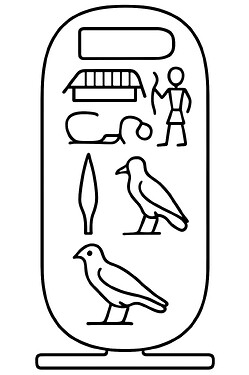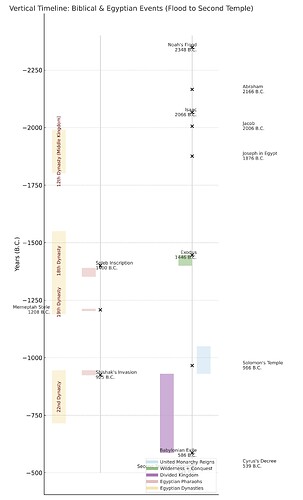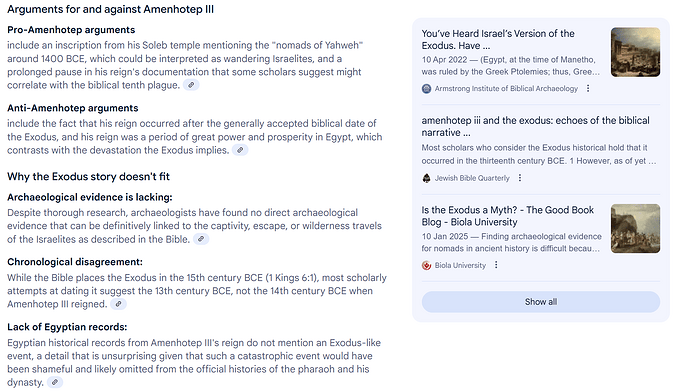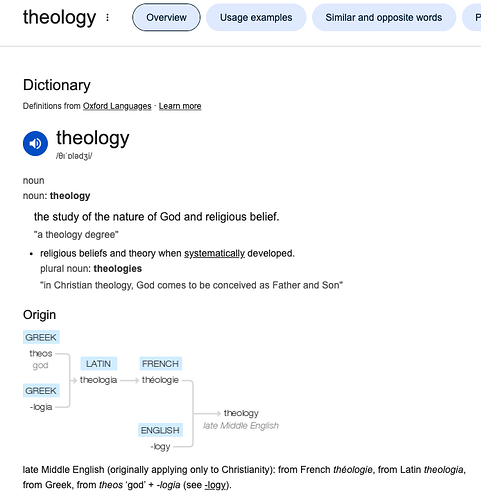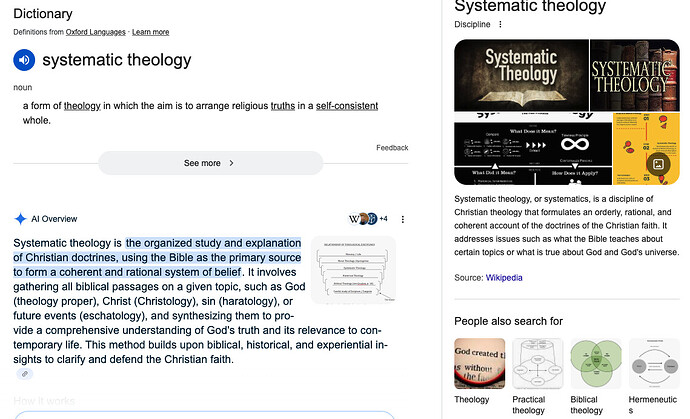Three Egyptian Inscriptions About Israel
In the Bible there are numerous interactions between the Israelites and the Egyptians. Such interactions can be seen in three Egyptian inscriptions that clearly refer to the Hebrew people.
1. The Soleb Inscription
At the end of the 15th century B.C., the Egyptian Pharaoh Amenhotep III built a temple to honor the god Amun-Ra at Soleb in Nubia (modern-day northern Sudan). Within the temple area are a series of columns on which Amenhotep III listed the territories he claimed to have conquered. Each territory is listed by a relief of a prisoner with their hands tied behind their backs over an oval “name ring” identifying the land of the particular foe. The most interesting from a biblical perspective is a column drum that lists enemies from the “the land of the Shasu (nomads) of Yahweh”. Given the other name rings nearby, the context would place this land in the Canaanite region. In addition, the prisoner is clearly portrayed as Semitic, rather than African-looking, as other prisoners in the list are portrayed.1 Two conclusions are almost universally accepted: this inscription clearly references Yahweh in Egyptian hieroglyphics (the oldest such reference outside of the Bible), and that around 1400 B.C. Amenhoteph III knew about the god Yahweh. Moreover, it would indicate an area in Canaan in the 15th century B.C. inhabited by nomadic or semi-nomadic people who worship the god Yahweh.
This inscription is also evidence that points to an early date for the exodus. According to a literal reading of 1 Kings 6:1, Solomon began building the temple in the 480th year after the people of Israel came out of the land of Egypt, placing the exodus around 1446 B.C. Moreover, when Moses first went to Pharaoh to deliver God’s message to let His people go, Pharaoh responded by saying, “Who is the LORD, that I should obey his voice and let Israel go? I do not know the LORD, and moreover, I will not let Israel go” (Ex. 5:2). By around 1400 B.C., when the Israelites would have been nearing the end of the conquest of Canaan, the ruling Egyptian Pharaoh does know about Yahweh. Egyptologist, Dr. Charles Aling and historian Dr. Clyde Billington summarize: “If the Pharaoh of the Exodus had never before heard of the God Yahweh, this strongly suggests that the Exodus should be dated no later than ca. 1400 BC because Pharaoh Amenhotep III had clearly heard about Yahweh in ca. 1400 BC.”2
2. The Merneptah Stele
In 1208 B.C. Pharaoh Merneptah erected a 10-foot tall victory monument (called a stele) in a temple at Thebes to boast of his claims to victory in both Libya and Canaan. Of Merneptah’s Canaanite campaign we read:
Israel is wasted, its seed is not;
And Hurru (Canaan) is become a widow because of Egypt.3
Despite Merneptah’s boast of having destroyed Israel, we know from history that this did not happen. The Bible makes no mention of this attack. It seems to have been a relatively small military campaign, taking only three cities and then boasting of Israel being laid waste. For comparison, when Pharaoh Shishak invaded Israel he recorded the names over 180 cities/places he claims to have conquered. Even though this seems to have been a small military operation the Merneptah inscription is of huge importance to biblical archaeology.
Most scholars agree that this is the oldest definitive reference to Israel as a nation outside of the Bible, and certainly the clearest Egyptian reference to Israel.4 It is also important because it too points towards an early date for the exodus (ca. 1446 B.C.) and not the late date that some scholars hold to (ca. 1270 B.C.). It is doubtful that there would be enough time from 1270 B.C. to 1208 B.C. to account for the exodus, the 40 years of wandering in the desert, the seven-year conquest of Canaan, the settlement of the tribes in their territories, and the establishment of a national presence in the land, all before Merneptah claims to have conquered them. Merneptah’s Canaanite campaign instead likely dates to the time of the Judges, when the nation of Israel was already settled in Canaan.
3. The Shishak Inscription
In 925 B.C. Pharaoh Shishak, identified as Shoshenq I, swept through Israel and Judah conquering city after city. The Bible describes this campaign in 2 Chr. 12:2-4:
In the fifth year of King Rehoboam, because they had been unfaithful to the LORD, Shishak king of Egypt came up against Jerusalem with 1,200 chariots and 60,000 horsemen. And the people were without number who came with him from Egypt—Libyans, Sukkiim, and Ethiopians. And he took the fortified cities of Judah and came as far as Jerusalem.
When he returned, he had a relief carved at the temple complex of Amun-Ra at Karnak, listing the 180+ cities he claims to have conquered. While Jerusalem itself is not named, numerous Israelite and Judahite cities are, including Beth-Shemesh, Gibeon and Megiddo, as well as places called “the fields of Abraham,” and the “highlands of David.” In fact, the remains of a victory stele set up by Pharaoh Shishak has been discovered at Megiddo.
The biblical text goes onto record that Shishak took away the treasures of the house of the LORD and the treasures of the king’s house. He took away everything. He also took away all the shields of gold that Solomon had made (1Ki 14:26). Since Jerusalem in not named in the toponym list, scholars have suggested that it was spared when King Rehoboam capitulated to Shishak paying a ransom of the treasures from the temple.5
One interesting note about the Shishak invasion is that when his son, Osorkon I became Pharaoh, he gave 383 tons of gold and silver as a gift to the temples of Egypt. He also buried his son Sheshonq II in a coffin made of pure sliver. Some have suggested that all of this wealth came from his father Shishak’s campaign into Canaan and that this gold and silver may have come from the Temple in Jerusalem and from the other cities in Judah and Israel that he conquered.6
Summary
Each of these inscriptions confirm Israel’s existence as a people group in the land of Canaan at the time the Bible describes. They act as external witnesses to the historicity of the biblical text.
Bonus Inscription:
The Berlin Pedestal is yet another Egyptian inscription that almost certainly references Israel. I highly recommend Dr. Bryant Wood’s article on this artifact, and the implications it has.
Endnotes:
1 Joel Kramer, The Oldest Yahweh Inscription. http://www.biblearchaeology.org/post/2017/01/20/The-Oldest-Yahweh-Inscription.aspx (Accessed February 2, 2019)
2 Charles Aling and Clyde Billington*, The Name Yahweh in Egyptian Hieroglyphic Texts.* http://www.biblearchaeology.org/post/2010/03/08/The-Name-Yahweh-in-Egyptian-Hieroglyphic-Texts.aspx (Accessed February 2, 2019)
3 Gary Byers, “Great Discoveries in Biblical Archaeology: TheMerneptah Stele,” Associates for Biblical Research, Great Discoveries in Biblical Archaeology: The Merenptah Stela (Accessed February 2, 2019)
4 Gary Byers, Great Discoveries in Biblical Archaeology: The Merneptah Stela. Home (Accessed February 3, 2019)
5 David E. Graves, Shishak I Inscription. Biblical Archaeology: Bonus 33 - Shishak I Inscription (Accessed February 3, 2019)
6 Bryant Wood, What evidence has been found of the Egyptian king, Shishak? What evidence has been found of the Egyptian king, Shishak? (Biblical personages in archaeology) - ChristianAnswers.Net (Accessed February 3, 2019)
++++++++++++++++++++++++++++++++++++++++++++++++
A visual of the cartouche as it appears in Egyptian hieroglyphic inscriptions.
The form tꜣ šꜣsw Yhwꜣ (“land of the Shasu of Yahweh”) appears most famously on a column base at Soleb, a temple of Amenhotep III (14th c. BCE). The cartouche encloses the place name among other “enemies of Egypt.”
The hieroglyphs look roughly like this (in Manuel de Codage transliteration):
tꜣ : X1 (bread loaf, “land”)
šꜣsw : š (pool sign) + ꜣ (reed shelter) + sw (lasso man sign) = “Shasu (nomads)”
Yhwꜣ : reed + twisted flax + chick + quail chick (phonetic spelling of Y-h-w-ꜣ)
